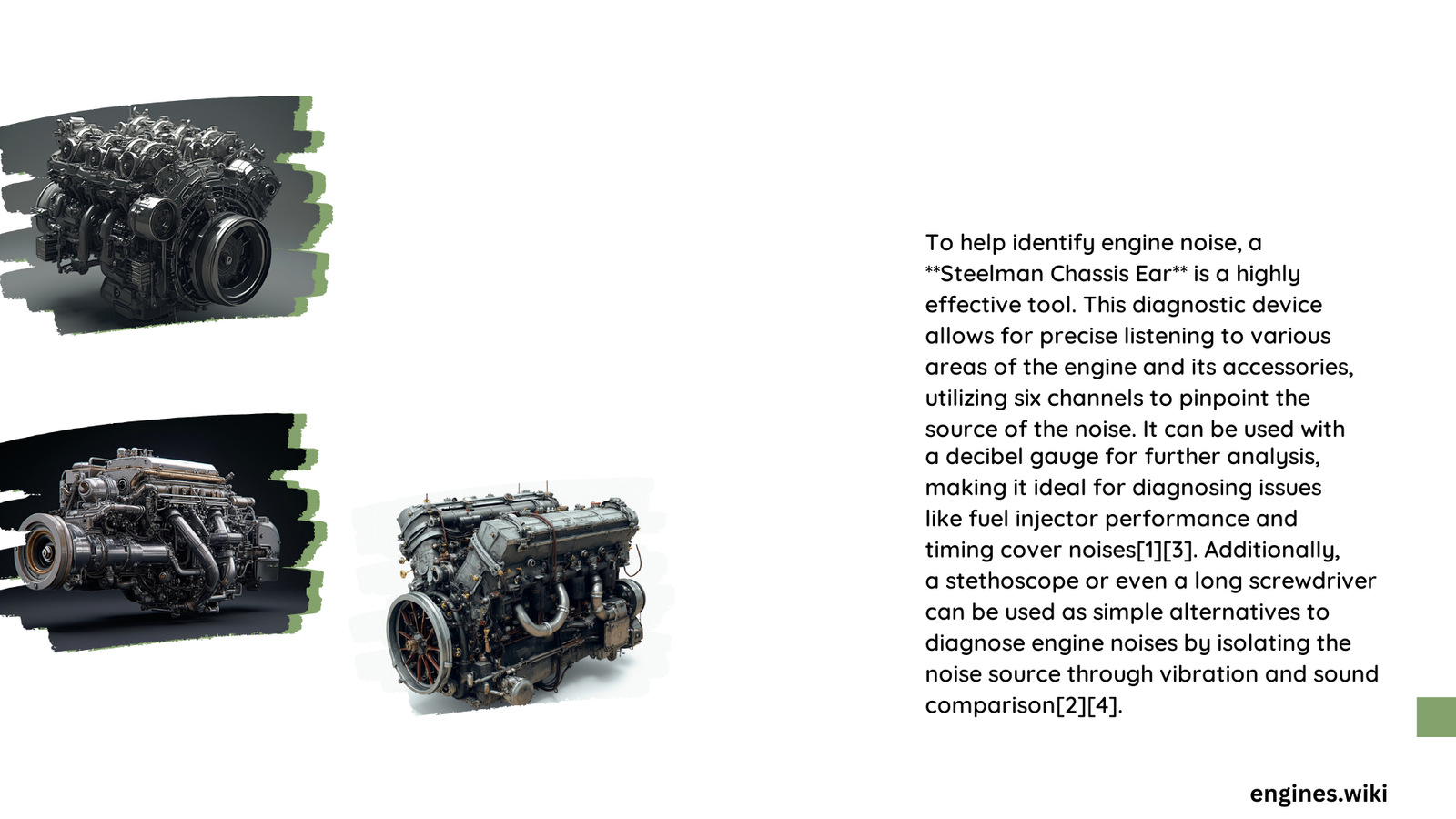Modern automotive diagnostics demand sophisticated tools to pinpoint complex engine noises. Technicians and mechanics require specialized equipment that can accurately detect, analyze, and locate various sound anomalies within vehicle engines. From advanced digital oscilloscopes to traditional acoustic listening devices, multiple solutions exist to help professionals diagnose potential mechanical issues before they escalate into significant problems.
What Are the Primary Tools for Engine Noise Detection?
PicoDiagnostics NVH Kits: Advanced Diagnostic Solution
PicoDiagnostics NVH (Noise, Vibration, Harshness) Kits represent cutting-edge technology in engine noise identification. These comprehensive diagnostic systems offer multiple advantages:
- Multi-Axis Vibration Measurement
- Real-Time Diagnostic Capabilities
- Comprehensive Data Visualization
Key Features
| Feature | Description |
|---|---|
| Sensor Configuration | Multiple axis measurement (X, Y, Z) |
| Software Capabilities | Frequency charts, RPM order analysis |
| Connectivity | USB and BNC cable interfaces |
Technicians can record data during road tests and perform detailed analysis back in the workshop, making these kits incredibly versatile.
Can a Mechanic’s Stethoscope Help Detect Engine Noise?
Traditional mechanic’s stethoscopes remain valuable diagnostic tools with unique characteristics:
- Frequency range: 10 Hz to 10 kHz
- Direct acoustic listening capability
- Affordable diagnostic option
- Simple, portable design
The stethoscope allows direct sound transmission from engine components, helping identify:
– Knocking sounds
– Tapping noises
– Potential mechanical irregularities
How Does ChassisEAR 2 Locate Noise Sources?
ChassisEAR 2 represents an innovative approach to noise diagnostics:
- Utilizes multiple microphones
- Provides spatial noise localization
- Helps pinpoint exact noise origins
- Designed for comprehensive vehicle diagnostics
Technical Considerations for Noise Diagnosis

Successful engine noise identification requires:
– Systematic diagnostic approach
– Understanding normal vs. abnormal sound signatures
– Comparative analysis techniques
– Professional-grade equipment
Recommended Diagnostic Workflow
- Initial sound assessment
- Select appropriate diagnostic tool
- Perform comprehensive recording
- Analyze captured data
- Compare with standard reference points
- Develop potential repair strategy
Factors Influencing Tool Selection
When choosing an engine noise diagnostic tool, consider:
– Budget constraints
– Complexity of expected diagnostics
– Technician expertise
– Specific vehicle requirements
Cost Spectrum
- Basic Stethoscope: $50 – $200
- ChassisEAR 2: $500 – $1,000
- PicoDiagnostics NVH Kit: $2,000 – $5,000
Professional Recommendations
Experienced automotive technicians often recommend:
– Combining multiple diagnostic approaches
– Continuous training on new technologies
– Maintaining updated diagnostic equipment
– Understanding theoretical sound analysis principles
Emerging Technologies
Future engine noise diagnostic tools will likely incorporate:
– Artificial intelligence algorithms
– Machine learning sound pattern recognition
– Enhanced wireless connectivity
– Cloud-based diagnostic platforms
Conclusion
Selecting the right tool for engine noise identification depends on specific diagnostic requirements, budget, and technical expertise. Each solution offers unique advantages, making comprehensive understanding crucial for effective vehicle maintenance.
Reference:
1. Pico Technology Automotive Diagnostics
2. Steelman Tools Diagnostic Equipment
3. Gain Express Automotive Tools
